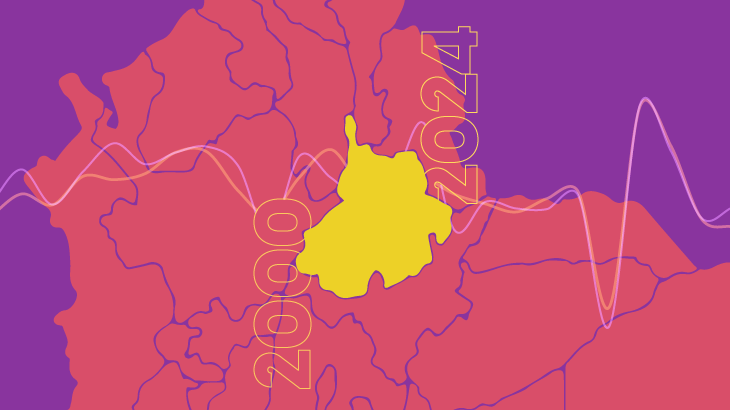Although Santander maintains one of the highest GDP per capita in the country, its economic and social performance has lagged in recent years. Given these trends, the objective of this document is to review the economic and social evolution of this department in the 21st century, with the aim of identifying the main patterns of change and exploring possible causes of this behavior. The results indicate that Santander's economy maintains relative importance in generating Colombian GDP and its per capita GDP is still above the national average. This average hides the heterogeneity in economic and social conditions within the department, as the municipalities present diverse conditions. This environment of the Santander economy poses challenges to the department's public policy.

The most recent
Focus
Although Santander continues to rank among the departments with the highest gross domestic product (GDP) per capita in Colombia, in recent years it has shown a relative lag in its economic and social performance. In light of these trends, the purpose of this document is to examine the economic and social evolution of the department during the 21st century, with the aim of identifying key patterns of change and exploring possible causes behind such developments. The period of analysis is subject to the availability of data for each of the variables considered. The main source of information is the National Administrative Department of Statistics (DANE in Spanish), and in some cases, methodological changes must be taken into account as they may affect trends throughout the period. Furthermore, the analysis consistently compares Santander’s situation with that of Colombia as a whole, in order to provide a reference framework for the department. Lastly, where possible, results are presented at the municipal level to identify spatial patterns within the department.
Contribution
This study contributes to the literature by providing a descriptive analysis of the economic and social evolution of the Department of Santander between 2000 and 2024—a period not previously covered at the time of this article’s preparation.
The municipality with the highest added value per capita (Barrancabermeja) reached a level 7.7 times greater than that of the municipality with the lowest value (Sucre)—a gap nearly twice as large as the difference between the GDP per capita of Bogotá and Chocó.
Findings
The findings indicate that Santander’s economy continues to play a relatively significant role in Colombia’s overall output, with a GDP per capita above the national average. However, aggregate figures mask the heterogeneity of economic and social conditions within the department, as municipalities exhibit diverse characteristics. Value added generation in Santander is concentrated in the Bucaramanga Metropolitan Area and in Barrancabermeja. These five municipalities, out of the department’s total of 87, accounted for 71% of Santander’s total value added in 2023. Nevertheless, the spatial pattern of value added per capita differs. Barrancabermeja recorded the highest per capita value added, while Bucaramanga fell below the departmental average. Moreover, 44 of the 87 municipalities had a per capita value added that did not exceed half of Santander’s average. These disparities are also reflected in social indicators across municipalities. For instance, in 2018, approximately 380,000 residents of Santander lived in households with a percentage of unmet basic needs above the national average. This economic context presents significant challenges for public policy in the department.


 Jaime Andrés Collazos-Rodrígueza,
Jaime Andrés Collazos-Rodrígueza,  Karen Astrid Rubio-Ramíreza,
Karen Astrid Rubio-Ramíreza,